Yes! I'd like to be contacted to schedule a consultation!
Search Engine Optimization (SEO) can seem like a maze of technical jargon and marketing strategies. However, it boils down to one essential goal: connecting your home-building business with the customers who need you. For home builders, SEO isn’t just a tool—it’s an inside line to a world of prospective clients actively or unknowingly searching for your expertise.
Let the SEO professionals at LinkNow welcome you to the world of SEO. In this guide, we’re going to explore on-page SEO, local SEO, content strategies, and so much more.
Marketing for home-building services is different from marketing for industries like retail or restaurants. The stakes are higher—customers are making significant financial and emotional investments and are likely to research their options thoroughly beforehand, probably online. When they do that research, you need to show up in the results.
Additionally, many home builders serve local markets, and most people looking to build a home will want a builder with local expertise. This situation makes connecting with prospects close to your business especially important. As we’ll see, a strong SEO strategy can accomplish these goals, putting you in front of those in your area searching for home builders.
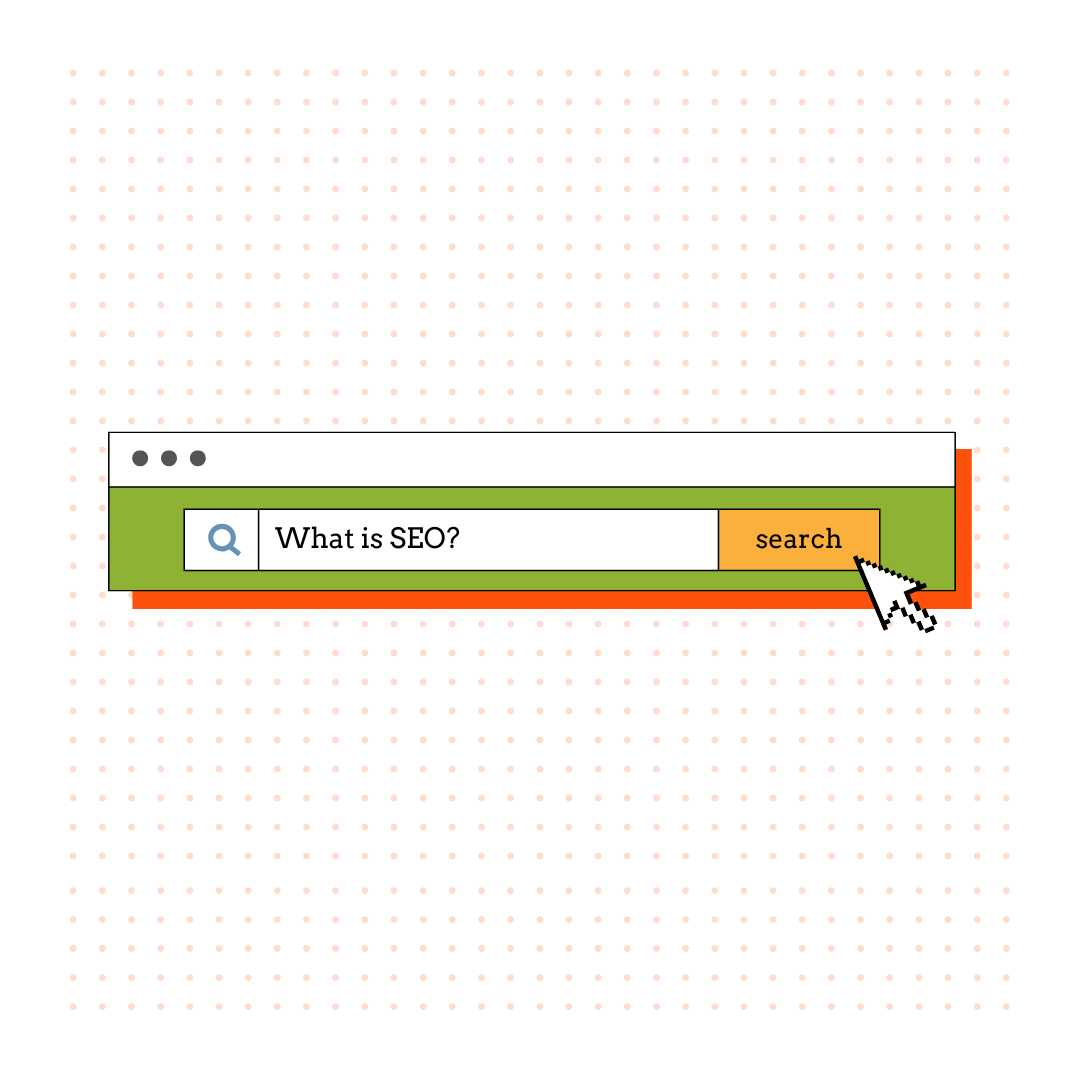
Imagine you’re opening a shop. You select a busy location and place your most attractive products in the window. You’ve just optimized your shop for foot traffic without even realizing it. In the same way, SEO is about positioning your online business where potential customers will find it and browse your services.
There are many interconnected parts of an SEO strategy, which we’ll go into later, but briefly, here’s some of what a strong SEO strategy does:
First and foremost, SEO is for you, the home builder. It’s your digital storefront, ensuring your business appears when potential clients search for services like yours. With SEO, you’re not just relying on word of mouth or referrals—you’re positioning yourself to be found by anyone who turns to the internet to look for home-building services.
Your SEO efforts are targeted at:
These are people who know they need a home builder. They might be typing "custom home builders near me" into Google or researching "best home builders for modern designs." This group is looking for expertise, reliability, and clear evidence that your business can meet their needs.
Some people may not realize they need a home builder until they stumble upon content that educates or inspires them. Blogs on home design trends or guides on planning a custom home can attract these individuals and position your business as a trusted home builder when they decide to move forward with a new build.
Finally, SEO is for web crawlers. Web crawlers are the internet bots that search engines use to evaluate and index different websites. They’re designed to check for certain factors that make a web page likely to be helpful for a user searching for its topic. As we’ll see, they consider many factors across many areas, but ultimately, a web crawler wants to know that your page will be helpful for a real person searching for information.
SEO is often divided into different categories, each contributing to an overall strategy. The end goal is always to generate business by getting your website in front of potential customers and attracting them to your pages. Still, there are many facets to a successful strategy.
Those facets are:
We’ll go in-depth on each of these in what follows.
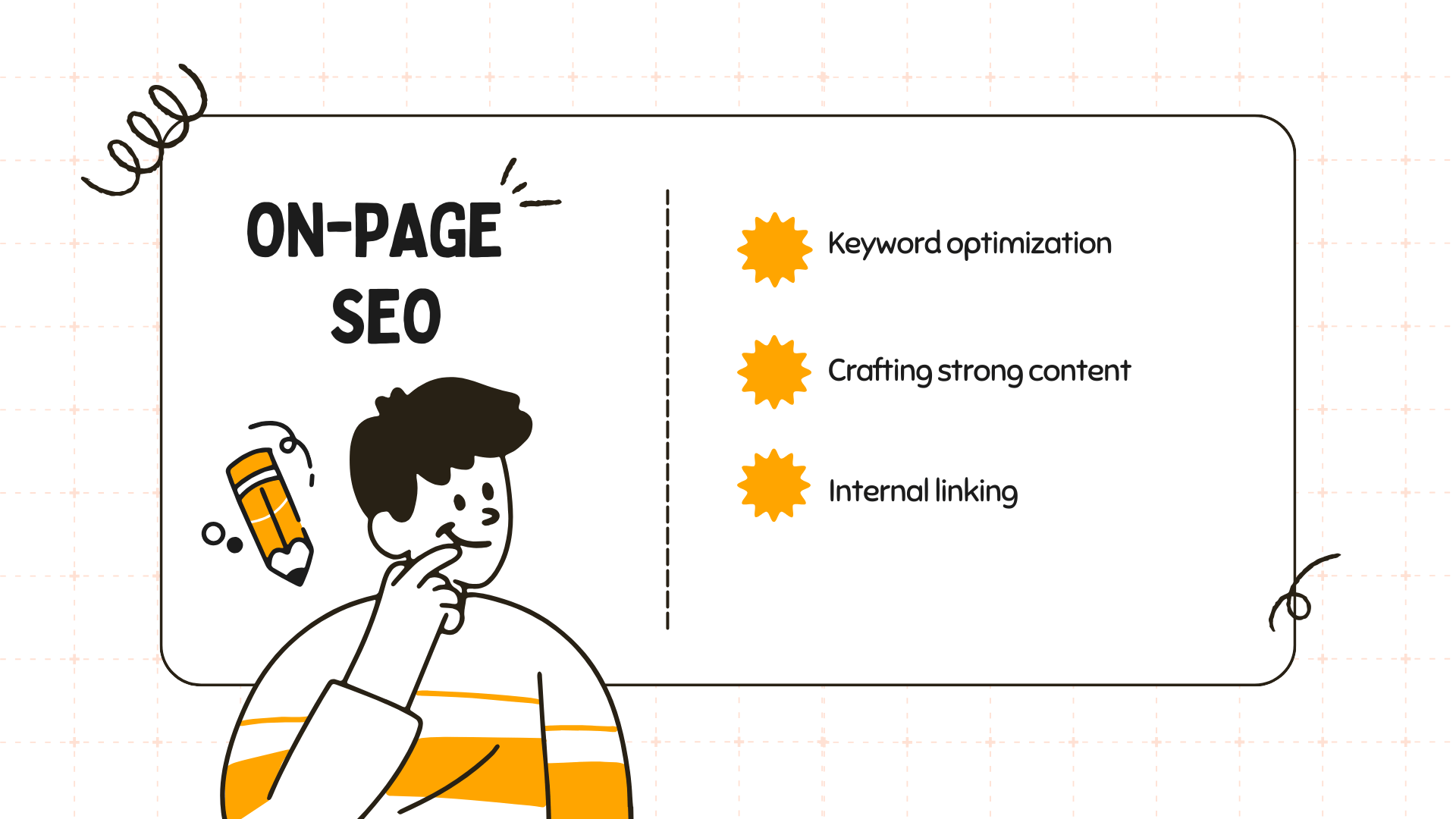
On-page SEO involves optimizing your website itself to make it user-friendly and search-engine-friendly. This includes the content you create, the keywords you target, and the way your website communicates its value to visitors.
We can break down the fundamentals of on-page SEO into these practices:
Keywords are the words or phrases a searcher might use when looking for a service online. They’re the foundation of any effective SEO strategy. For home builders, they might include phrases like "custom home builders," "luxury home construction," "residential building services," or "home remodeling contractors near me."
Each page on your site typically has a primary keyword, which is its topic. To get started on your keywords, just think of the services you offer. “Home Building” is a great one, for example. For secondary, longer keywords to include on pages, you can look at suggested related searches or see what Google fills in when you type in “home builder” on the search bar. It’s not the most scientific approach, but it’s a good place to start.
To identify and evaluate keywords, you can also use one of several online tools. We recommend Google Keyword Planner, Ahrefs, or Ubersuggest. They’ll help you find high-traffic, low-competition terms that best align with your services.
For home builders, using keywords strategically ensures your content is seen by potential clients actively searching for your services. However, effective keyword usage requires a balance between optimization and readability.
To get the most out of your keywords, follow these best practices:
Keyword stuffing—overloading your content with keywords in an attempt to manipulate search rankings—is a practice to avoid at all costs. While it may seem like a quick way to boost visibility, search engines penalize sites for this tactic, often lowering their rankings. Keyword-stuffed content can also turn off readers, making your site appear unprofessional or spammy.
Instead of overusing keywords, prioritize creating high-quality, informative content that addresses your audience's needs. Search engines value user experience, so well-written content with natural keyword integration will always outperform content that prioritizes quantity over quality. Writing natural and informative content will also provide exactly what search engines want to see: clusters of secondary keywords related to a page’s primary keyword.
Don’t overlook location-based keywords, such as "custom home builder in [city]" or "residential construction near [area].” These are great for bringing locals to your site, who will naturally be more likely to hire a local company. Additionally, long-tail keywords—more specific phrases like "modern farmhouse builders in [city]"—can target clients who are further along in the decision-making process and ready to hire.

Search engines prioritize websites with high-quality, relevant content that answers users’ queries. For home builders, this means creating tailored content that showcases your expertise, builds trust, and provides valuable information for prospective homeowners.
To engage your audience and boost SEO, focus on creating the following types of content:
Service pages are the cornerstone of your website. They showcase the full range of your services and expertise, such as custom home building, renovations, and additions. These pages should clearly explain the benefits of your services, highlight your unique approach, and address the needs of your target audience.
Incorporate high-traffic keywords naturally throughout the content and provide a call to action (e.g., “Contact us for your dream home today!”) to guide potential clients toward hiring your services.
Visual galleries of past projects give potential clients an idea of your capabilities and style. Include alt text with keywords to improve visibility. Alt text is a short description of the picture in the site’s code. It helps both web crawlers and those with visual impairments understand your images.
Address common questions about building timelines, costs, and materials. This type of content builds trust and keeps users engaged on your site longer.
Share tips, trends, and guides like "What To Expect During a Custom Home Build" or "Top Design Trends for Modern Homes." Blogs help target long-tail keywords and position your company as a trusted industry leader.
Here are some other potential blog ideas to get you started:
Pages or blog posts optimized for local keywords, such as "home builders in [city]," will help you capture local traffic and boost your presence in the community.
Conversion-oriented content aims to turn visitors to your site into customers. It highlights your services and shows your value. Mentioning your local expertise, high-quality materials, or competitive pricing, for example, helps convince users looking for home building services to choose you. However, conversion-oriented content alone can come across as pushy and can seem like you’re covering for a lack of expertise with an aggressive sales approach.
On the other hand, informative content establishes you as an expert in the home-building industry. Examples for a generic Home Building page could include an explanation of different siding materials or a comparison of the pros and cons of an open kitchen layout. These also help you target valuable secondary keywords and provide users with detailed, helpful information.
You can also showcase your knowledge and expertise by publishing well-researched articles, how-to guides, and insights on topics like sustainable construction methods, modern home design trends, or the benefits of energy-efficient homes. This type of content builds credibility and appeals to a broader audience.
Together, these two approaches help establish your business as a go-to resource for home building, increase your website traffic, and ultimately convert more visitors into clients.
Internal linking involves adding hyperlinks that connect one page on your website to another. For example, linking your "Custom Home Building" service page to a blog post about “Top Design Trends for Custom Homes” helps users and search engines navigate your site more effectively. These links create a network of related content, ensuring that important pages receive more visibility and traffic.
For home builders, internal linking:
To maximize the benefits of your internal linking strategy, start by using descriptive anchor text. Rather than adding in a generic phrase like “click here,” opt for keyword-rich text such as linking to a mention of “custom home building” within the page.
Focus on linking to relevant pages that provide additional value to your audience. For example, if you’re discussing home renovation tips in a blog post, link to your renovation service page or a portfolio featuring similar projects. Prioritize key pages like service descriptions, FAQs, and portfolios, as these are essential for showcasing your expertise and converting visitors into clients.
Finally, keep your links updated and balanced. As you add new content to your site, revisit older pages to include links to fresh blogs, updated services, or recent projects. Be mindful not to overwhelm users with excessive links—aim for two to five meaningful internal links per page. This ensures your website remains navigable, engaging, and optimized for both readers and search engines.
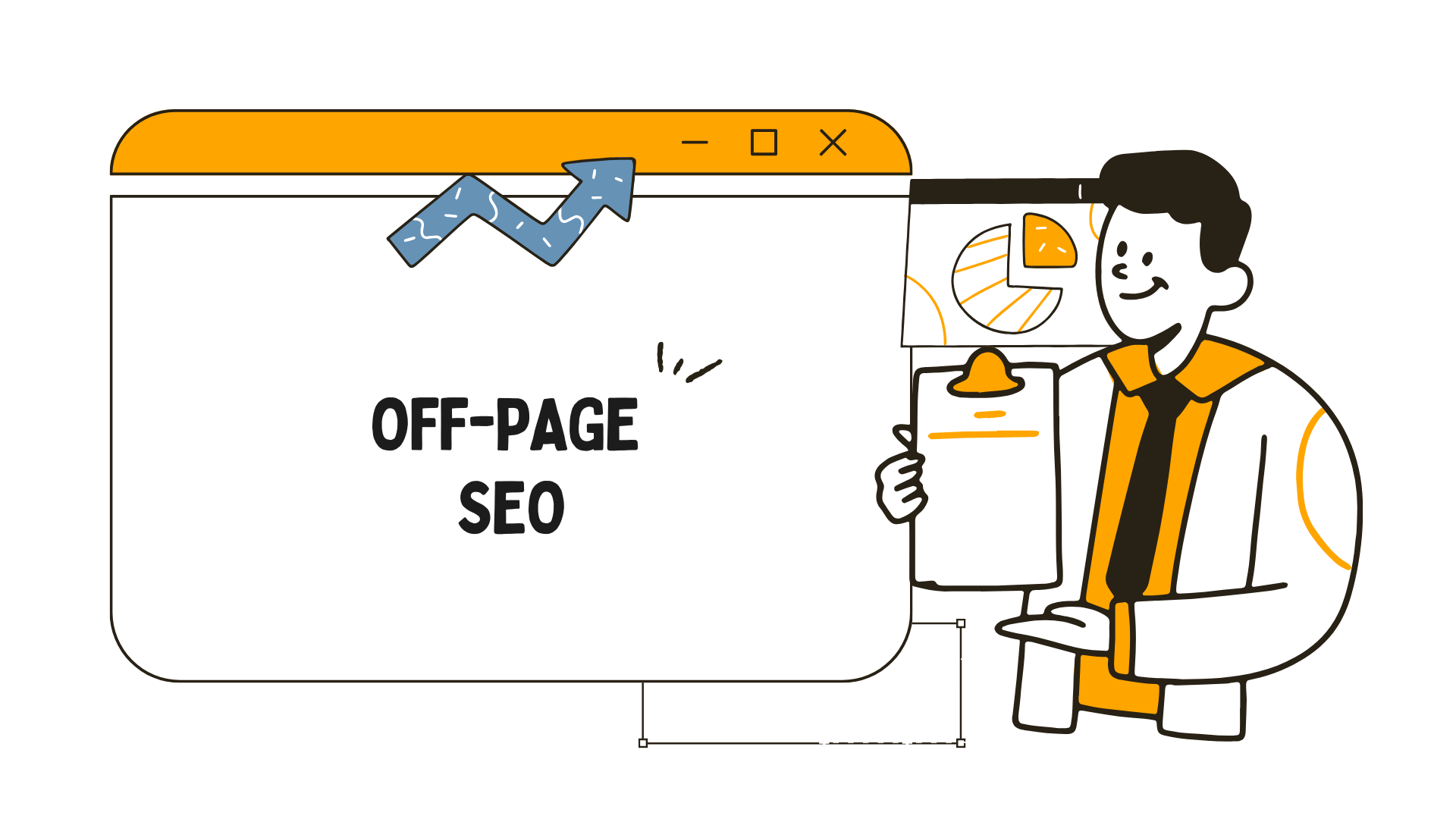
Off-page SEO refers to the strategies and actions taken outside your website to improve its visibility, authority, and ranking in search engine results pages (SERPs). For home builders, off-page SEO is a crucial component of a digital marketing strategy. It helps drive web traffic to your site, builds your brand’s credibility, and ultimately leads to more client inquiries.
Effective components of an off-page SEO strategy include:
Unlike internal linking, which focuses on connecting pages within your website to improve navigation and distribute link equity, link-building aims to earn external links from other websites to yours. These external links, referred to as "backlinks," serve as endorsements of your content's quality and relevance. For home builders, link-building is essential because it improves your site’s visibility in search engines while also positioning your business as a trusted and credible source in a highly competitive industry.
Here’s why link-building matters for home builders:
Think of link-building as the bridge that connects your on-page SEO efforts to your off-page strategy. Strong on-page SEO—such as high-quality, keyword-optimized content—makes your site attractive to link opportunities. Meanwhile, targeting backlinks as an off-page SEO strategy enhances your site’s authority and rankings.
By focusing on both sides—creating content worth linking to (on-page) and earning those links (off-page)—you create a holistic SEO strategy that boosts your rankings and enhances your visibility online.
Managing your online reputation is critical for building trust with potential clients. Encourage satisfied customers to leave positive reviews on platforms like Google, Yelp, Houzz, and Angi. These reviews establish credibility while influencing how your business appears in local search results.
Responding to positive and negative reviews demonstrates professionalism and shows potential clients that you value customer feedback. For positive reviews, a simple message of appreciation is enough. For negative ones, it’s important to respond considerately and offer to find a solution to the problem.
Engaging on social media platforms is an excellent way to showcase your work and connect with your audience. Share high-quality photos of completed projects on platforms like Instagram, Facebook, and Pinterest. These visuals can inspire homeowners while building your brand's visibility. Consistently posting and responding to comments can also foster a sense of community and encourage prospective clients to reach out.
Writing guest posts for reputable construction or home improvement blogs can help you reach a broader audience. Share valuable insights on topics like "Planning Your Dream Home" or "Questions to Ask Your Home Builder." These articles position you as an authority in the industry and, in most cases, provide valuable backlinks to your website, boosting your site's SEO performance.
Partnering with local businesses, such as interior designers, landscapers, or real estate agents, can expand your reach both online and offline. These collaborations often lead to mutual promotion, such as blog features or social media shoutouts, that attract new clients. Additionally, participating in local events or sponsoring community initiatives can build goodwill and enhance your visibility.
Ensure your business is listed in online directories like the Better Business Bureau, HomeAdvisor, and local chambers of commerce. Accurate and consistent listings, including your business name, address, and phone number, are essential for SEO. If there are slight variations, search engines might struggle to identify the listings as the same company. These citations help potential clients find you and improve your website's authority in search engines.
Overall, off-page SEO aims to establish your business as a trustworthy authority in your industry. Search engines want to know that you’re a legitimate business providing quality services. The more links, citations, and mentions you have across different websites, the more search engines will see you as a reputable company able to answer a user’s need.
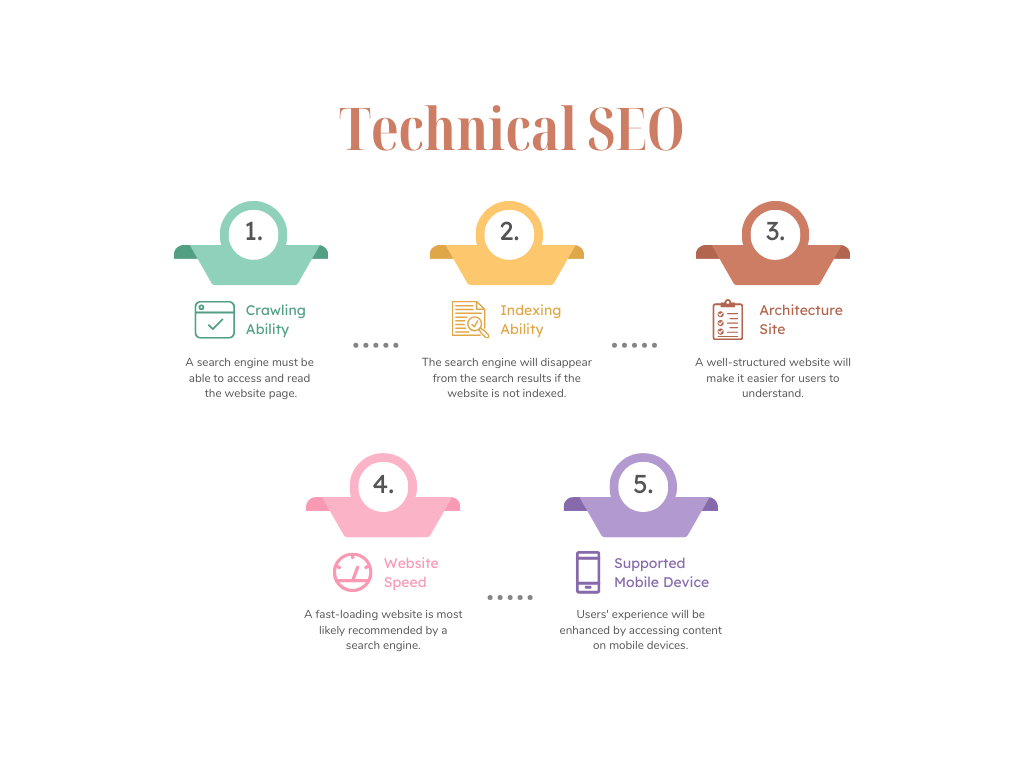
Technical SEO refers to optimizing the technical aspects of your website to ensure it’s accessible, functional, and easy for search engines to crawl and index. It includes everything from making sure your website loads quickly to ensuring it’s mobile-friendly and secure.
Technical SEO is the unsung hero of your online presence—if your site has technical issues, even the best content and link-building strategies might not deliver results. By focusing on technical elements, you create a seamless user experience for potential clients while helping search engines understand and rank your site effectively.
Here are key areas of technical SEO to focus on:
Slow-loading websites can frustrate users and lead to higher bounce rates, costing you valuable leads. Search engines will also punish slow loading times since they frustrate users and take longer to get them the information they want. However, it’s more about reaching a base threshold than making your site as fast as possible. Once it loads reasonably quickly, there are diminishing returns to improving it further.
You can usually tell if a website is loading slowly by simply trying to open it with a strong internet connection. However, we also recommend using tools like Google PageSpeed Insights, GTmetrix, or Pingdom to measure load times and identify performance issues.
You can also check your website’s Core Web Vitals scores (Largest Contentful Paint, First Input Delay, and Cumulative Layout Shift) using Google Search Console or Lighthouse. After making any updates, always test your site’s speed on both desktop and mobile to ensure consistent performance across devices.
Ways that you can optimize your site speed include:
Since mobile searches now make up a majority of all searches, Google prioritizes websites with mobile versions. This change makes setting up a mobile version of your site crucial.
Here are some elements a mobile site should have:
Security is a big concern for internet users and companies. As a result, Google now ranks sites higher that use HTTPS (Hypertext Transfer Protocol Secure) instead of HTTP. HTTPS requires websites to be authenticated by a third party. If your site doesn’t use HTTPS, search engines will naturally be less trusting and rank it lower.
Crawling errors occur when a web crawler tries to index your site but fails. This can happen for a few different reasons, some of which are very technical and involve coding issues. Others, however, can be as simple as your site being too slow and the bot abandoning the pages. Web crawlers will only spend so much time on your site, so the faster it is, the more pages it can get through.
Other issues include a poor sitemap or internal linking issues, which direct the bot to low-priority pages or pages that no longer exist. These mistakes will result in the bot missing valuable pages while indexing unimportant ones.
In addition to preventing the bot from crawling your site, broken links and a poor site structure frustrate users as they try to find the information they want. You can do a manual audit of these issues, but it takes some time. Fortunately, there are tools you can use to spot and fix these errors. We’ll take a look at some of these a little later.
Structured data is a standardized snippet in a page’s code that specifies what that page is about to a search engine. There are many possible fields for structured data. For example, you could add that you’re a local business or your aggregate customer review rating.
Implementing structured data markup can help a bot crawl your site, as the bot can quickly identify what a page is about. In addition, structured data can lead to rich snippets, which present more detailed information in a more straightforward and eye-catching way on SERPs, ultimately leading to more clicks for your site.
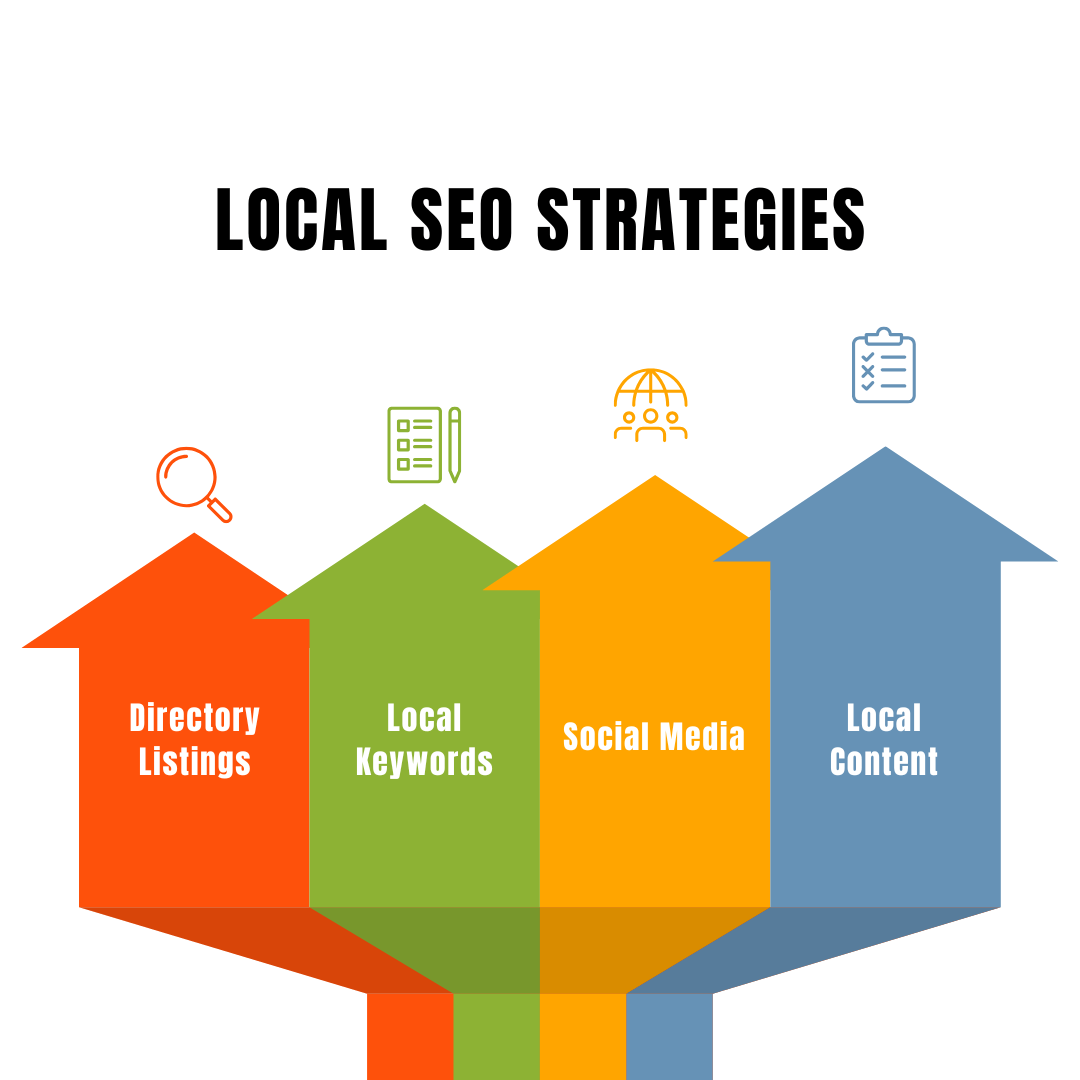
Local SEO focuses on optimizing your online presence to attract more business from relevant local searches. Imagine a homeowner in your city wants to build a new home. They type "best home builders in [your city]" into Google. If your business has implemented strong local SEO strategies—like being listed in online local directories, having location-specific keywords and pages, and maintaining a well-optimized Google Business Profile—you’ll be high on their list of options.
Let’s look at how to optimize your site for local searches.
Your Google Business Profile (GBP) is one of the most powerful tools for local SEO. It’s the information that appears on Google when people search for your business name or related terms. It can include your location, hours, reviews, contact info, website, and photos. Surprisingly, many businesses have an unclaimed profile without realizing it. Google often auto-generates profiles from publicly available information, but unless you claim yours, you can’t control what potential customers see.
If your profile remains unclaimed, it might display outdated or incorrect details, which could lead to lost opportunities. Claiming your profile ensures you’re in control of your online presence, making it easier for clients to find and trust you.
After claiming your profile, optimizing it is essential to stand out in local searches.
Add complete and accurate information about your business, including:
Encourage satisfied customers to leave reviews and respond to them professionally to boost your credibility. Keeping your profile updated with new photos, posts, and events also helps maintain visibility in search results.
In addition to your Google Business Profile, these strategies can further enhance your local SEO efforts:
Home building is largely a local business with customers valuing local expertise. This element makes it crucial to get your website in front of those in your area. Local SEO efforts, like using location-based keywords and optimizing your GBP, can help you do just that.
The best way to fine-tune your SEO strategy is to examine what’s working and what isn’t. To do so, you need to look at how your pages are performing.
Here are some of the most important metrics for evaluating your site’s performance:
Depending on what you find, you can tweak your page accordingly. For example, if a page has a good keyword ranking but a poor conversion rate, then maybe you need to change the text of your call-to-action button to something more exciting, like “Get Started on Your Dream Home Now!” If a page has a low time on page metric, then either your content or site design isn’t resonating with users, and it’s time to try something new.
Fortunately, you don’t have to sort through your site analytics alone. There are many great tools available that make it easy.
Here are some we recommend:
Analytics are crucial for your SEO efforts. Just because something is working now doesn’t mean it will work forever. Analytics tools, strategy refinements, and some experimentation can help you reach the top and stay there.
As you can see, there’s a lot that can be done after you register a domain name for your company’s website. In fact, that’s just the beginning. With a home building business to run, though, it can be difficult to dedicate the necessary time to perfecting your SEO. That’s where we come in.
At LinkNow, we specialize in crafting tailored SEO strategies that drive traffic, improve rankings, and boost conversions. Whether you’re a home builder looking to dominate local search or just starting to establish your online presence, our expert team is here to help.
Are you ready to take your home building website to the next level? Contact us for expert guidance.